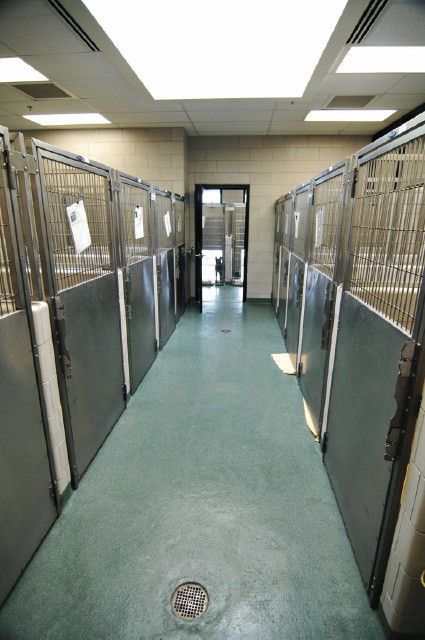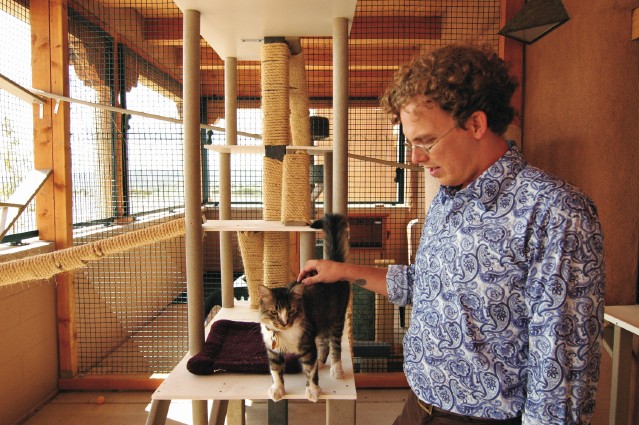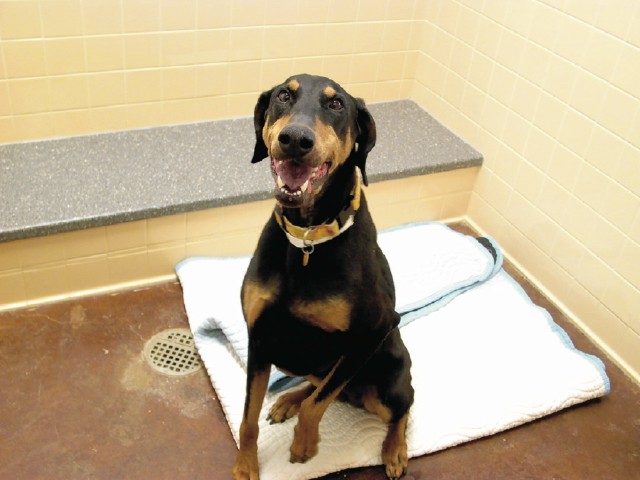Work In Progress
Albuquerque’s Animal Shelters Strive To Clean Up Their Act


Bill Hutchison shows off the Santa Fe shelter’s “kitty campground,” an outdoor play and living area for cats who prefer to be outside.
Wes Naman

Disco, a dog up for adoption at the Santa Fe shelter, sits in a dog adoption room.
Sarah Patamia

A dog sits in an adoption kennel at the Albuquerque Eastside Animal Care Center.
Christie Chisholm

The Santa Fe shelter also takes in small mammals such as rabbits, hamsters and ferrets.
Wes Naman








